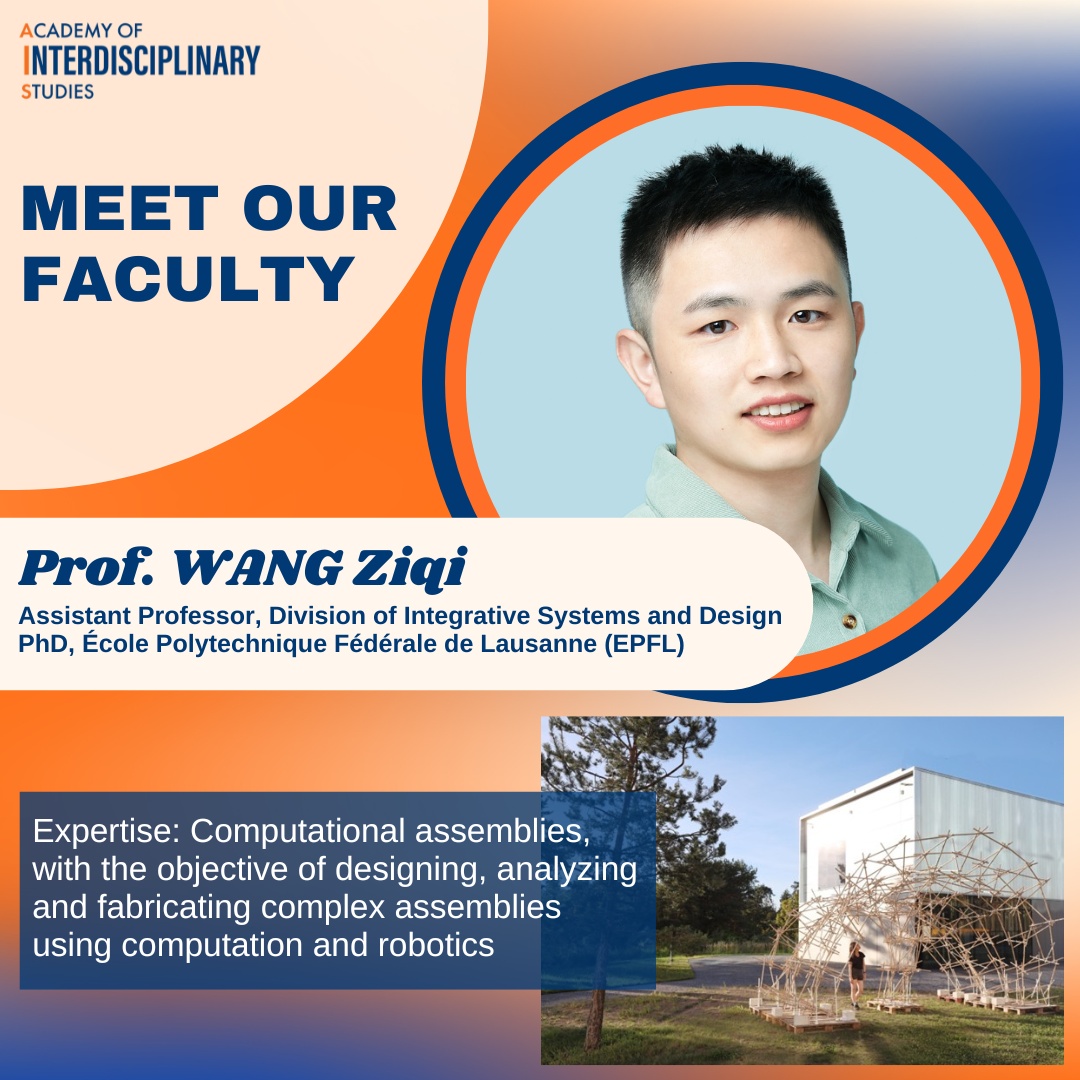Discover the pioneering work of Prof. WANG Ziqi, Assistant Professor of the Division of Integrative Systems and Design (ISD), where intelligent robotics meets architecture! From automated construction systems to AI-powered design tools, Prof. Wang is revolutionizing how we create and build our future.
Curious about how artificial intelligence could transform traditional craftsmanship into innovative building solutions? Read on to explore how this visionary researcher is reshaping the intersection of design, robotics, and construction!
-----
Could you tell us more about you?
Before joining HKUST, I spent seven years in Switzerland completing my Ph.D. and postdoctoral research. Although my background is in computer graphics, I was fortunate to contribute to several interdisciplinary projects that integrated robotics and computation to address complex design and fabrication challenges in architecture and construction. These successful collaborations reinforced my belief in the value of cross-disciplinary teamwork. The concepts of ISD and AIS deeply resonated with me because they offer a natural platform for bringing together diverse fields.
My current research focuses on developing a seamless design-to-production workflow that enables individuals to design and fabricate customized items using artificial intelligence and robotics. Specifically, we are exploring the use of multiple robots to efficiently assemble personalized items, such as toys, furniture, and architectural modules, designed through AI-assisted tools.
What inspired you to specialize in this line of research?
I come from Huangshan, China, a small town renowned for its world-recognized landscape and distinctive Hui-style architecture. Most of the historical buildings in this region are constructed from wood. I have always been amazed by the durability of these structures, which are held together solely through wood joints. However, constructing such buildings is a challenging process. The number of skilled craftsmen capable of mastering this traditional technique is rapidly declining. My original motivation was to utilize digital methods, such as robotics, to preserve these invaluable skills. Over time, I realized that these wooden structures hold great potential for modern architecture, offering sustainable solutions that go beyond their historical and cultural significance.
What impact do you want your work to have on society?
Our work focuses on leveraging artificial intelligence to make the design of personalized items more accessible to the general public. Additionally, we aim to utilize robotics to automate tasks that are both hazardous and labor-intensive for humans. including construction in challenging terrains and and the recovery of functional components from discarded products.
Do you have any advice for students interested in your research area?
Start working on projects that fascinate you the most, even if they fall outside your field of expertise. Never hesitate to ask 'simple' or 'obvious' questions when learning from experts in other disciplines. Continuously challenge yourself to assess whether the problem you're addressing is a true bottleneck or merely within your comfort zone. Dream big, but begin with small, practical prototypes to validate your ideas.
Could you share a fun fact about you?
I never learned to ski until I moved to Switzerland. Once I got the hang of it, I found the sport incredibly addictive! Back then, I would hop on a train to reach the slopes—now, it takes a flight.





